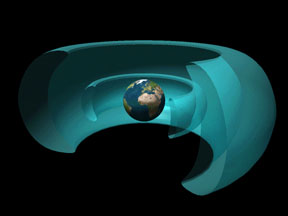This is an artist's conception of the Earth and the inner and outer radiation belts that surround it.
Click on image for full size
Windows to the Universe
Radiation Belts
The Earth's radiation belts are just one part of the system called the
magnetosphere. The radiation belts of the Earth are made up of electrons, protons and heavier atomic ions. These particles get trapped in the magnetic field of the Earth.
The radiation belts, like the plasmasphere, are toroidally shaped. There is an outer and an inner radiation belt.
The belts of trapped radiation near the Earth were discovered by James Van Allen in 1958. Therefore these belts are also known as Van Allen Belts.
It is really important that we have a good understanding of the radiation belts because the particles in these belts can be dangerous to humans, animals or even electronic equipment that flies in this area. "The particle population of the Earth's radiation belts makes it dangerous for humans without massive shielding to do more than quickly pass through them," reports Dr. James Van Allen.
Last modified May 27, 2003 by Lisa Gardiner.
You might also be interested in:
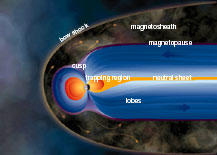
The Earth has a magnetic field with north and south poles. The Earth's magnetic field reaches 36,000 miles into space. The magnetic field of the Earth is surrounded in a region called the magnetosphere.
...more
The plasmasphere is a donut-shaped region inside the Earth's magnetosphere. It is basically an extension of the ionosphere, or the topmost part of the Earth's atmosphere. The magnetic field lines of the
...more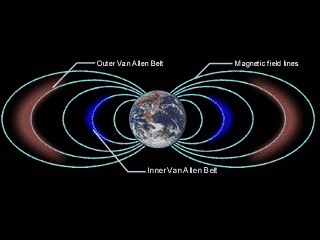
The belts of trapped radiation above the Earth's atmosphere, but within the magnetosphere, were first detected by James Van Allen in 1958. Therefore these belts are also known as Van Allen Belts. When
...more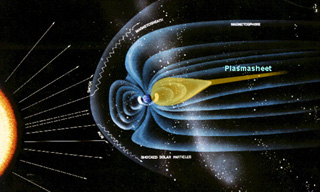
The plasma sheet is just that, a sheet of plasma that extends down the magnetotail dividing the two lobes of the Earth's magnetic field. This outer plasma is hotter than the plasma in the plasmasphere,
...more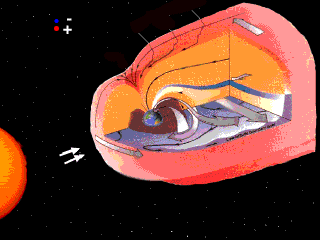
Dangerous particles don't hit the Earth's surface because they are forced by the magnetic field to move around the Earth. Particles do enter at the funnels over the poles or they gain entry far downstream
...more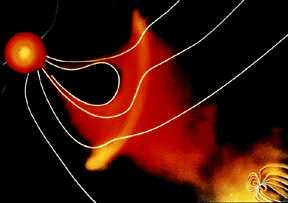
There is a giant magnetic "bubble" in space around the Sun. That "bubble" is called the heliosphere. In a sense, we Earthlings live within the outer atmosphere of our Sun. The solar
...more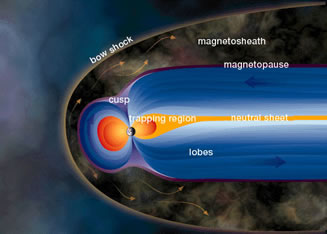
A magnetosphere has many parts, such as the bow shock, magnetosheath, magnetotail, plasmasheet, lobes, plasmasphere, radiation belts and many electric currents. It is composed of charged particles and
...more


